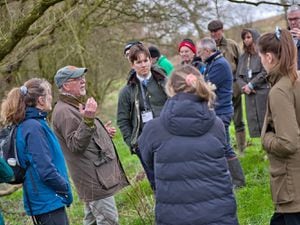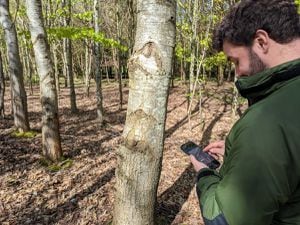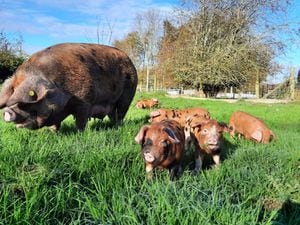Hedgerow removal
A countryside hedgerow is a boundary line of bushes which can include trees. A hedgerow is protected, meaning you cannot remove it, if it meets the following criteria for:

– Length
– Location
– Importance
Length
A hedgerow is protected if it’s:
– More than 20m long with gaps of 20m or less in its length
– Less than 20m long, but meets another hedge at each end
Location
A hedgerow is protected if it’s on or next to:
– Land used for agriculture or forestry
– Land used for breeding or keeping horses, ponies or donkeys
– Common land
– A village green
– A site of special scientific interest
– A protected European site such as a special area of conservation or special protection area
– A local or national nature reserve
– A land belonging to the state
A hedgerow is not protected if it’s in, or marks the boundary of, a private garden.
Importance
A hedgerow is important, and is protected, if it’s at least 30 years old and meets at least one of these criteria:
– Marks all or part of a parish boundary that existed before 1850
– Contains an archaeological feature such as a scheduled monument
– Is completely or partly in or next to an archaeological site listed on a Historic Environment Record (HER), (formerly a Sites and Monuments Record)
– Marks the boundary of an estate or manor or looks to be related to any building or other feature that’s part of the estate or manor that existed before 1600
– Is part of a field system or looks to be related to any building or other feature associated with the field system that existed before 1845 – you can check the County Records Office for this information
– Contains protected species listed in the Wildlife and Countryside Act 1981
– Contains species that are endangered, vulnerable and rare and identified in the British Red Data books
– Includes woody species and associated features as specified in Schedule 1, Part II Criteria, paragraph 7(1) of the Hedgerow Regulations – the number of woody species needed to meet the criteria is one less in northern counties
You can only remove the hedgerow if:
– It’s less than 30 years old
– You’re the owner, tenant or manager of the hedgerow
– You’re a utility company that’s eligible to remove it
You should discuss your proposal to remove a hedgerow with the local planning authority (LPA) first to make sure it’s legal to do so.
The LPA is one of the following:
– The local authority
– The National Park Authority for land within a national park boundary
– The Broads Authority in the Norfolk Broads
– The Council of the Isles of Scilly for land on the Isles of Scilly
You’ll need to provide plans relating to the hedgerow you want to remove. After they have acknowledged your request, your LPA has 42 days to respond to your written notice to remove a hedgerow. In that time they will consult the relevant parish council. The parish council might ask for more time to consider the proposal.
The LPA will issue either:
– A hedgerow retention notice – if the hedge is protected and must be kept
– A written notice giving permission to remove it in the way you’ve proposed
You have up to two years from the date of the written notice to remove the hedgerow.
You can remove the hedgerow if you do not hear back from the LPA within the 42-day period.
People can object to a removal of a hedgerow by contacting the LPA. The LPA will consider any objections they receive.
You can appeal if you disagree with a decision and your LPA has sent you either:
– A retention notice, saying you cannot remove a hedgerow
– A replacement notice, telling you to replace a hedgerow you’ve already removed
You must appeal within 28 days of the date on the LPA decision letter.
You must not do any work which might harm nesting birds or destroy their nests. You’ll usually find nesting birds during the main nesting and breeding season from March 1 to August 31. Before carrying out work on hedgerow trees you must check if you need a felling licence. The LPA will tell you if there’s a tree preservation order in place or if it’s in a conservation area.
If you get paid under the basic payment scheme, there are restrictions on managing hedgerows in the Good Agricultural and Environmental Conditions (GAEC) guidance. If you have an Environmental Stewardship agreement or Countryside Stewardship agreement, you must also check your agreement handbook to see what restrictions there are.
Kathryn Williams is director and RICS registered valuer at Davis Meade Property Consultants





